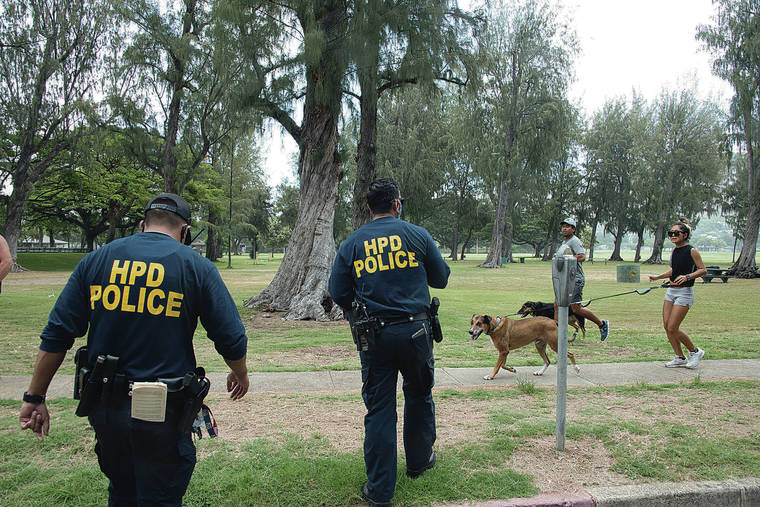In mid-May, when Gov. David Ige rolled out a strategy for reopening Hawaii’s economy, he lauded the state’s residents for “flattening the curve,” slowing coronavirus spread so that fewer people need to seek treatment, thereby not crashing our fragile health-care resources.
Three months later, though Hawaii continues to rank among states with the overall lowest per capital COVID-19 case count, it also is now among states seeing the fastest rise in cases. The curve is climbing, and threatens to soon overwhelm tactics for keeping it in check. The situation, simply put, is dangerously precarious.
On Monday, as Hawaii marked a 12th straight day of triple-digit cases and hospitals ramped up to expand capacity for COVID-19 patients, Mayor Kirk Caldwell suddenly shut down Honolulu Hale to most on-site business after at least 11 employees there tested positive for infection.
At the City Hall announcement, Caldwell plainly stated valid worry. “I’m concerned that if we don’t get a handle on the number of cases, and it continues to go up … at some point in the near future, we’re going to max-out our ICU units and more people are going to be dying,” he said. “This thing can break wide open. We could become New York.”
Months ago, New York City cases spiraled out of control, but the metropolis has since effectively gotten a handle on the virus, with a steady flow of low COVID-19 numbers. It should be eye-opening to residents here that Hawaii currently meets New York state’s metrics for places with significant community spread, thereby requiring travelers from here to there to quarantine for 14 days.
On Tuesday, New York Gov. Andrew Cuomo said in a written statement: “We must keep up our efforts — we cannot go back to the hell we experienced a few months ago, which is why we are adding Hawaii, South Dakota and Virgin Islands to the travel advisory,” which includes nearly 30 other states and Puerto Rico.
Honolulu’s retreat of most of its 1,500 employees from the municipal complex, through the Labor Day holiday, is startling — with upwards of 1,000 to have been tested on-site for the coronavirus on Monday. Prior to the mass testing, nearly 50 city employees islandwide had already tested positive, including City Hall office workers, TheBus drivers and firefighters.
New York seized control of its outbreak by way of lock-down and garnering strong public support, in part, by providing daily information to citizens in a clear, crisp manner. Hawaii’s leaders should take note.
Ige’s latest emergency order — limiting indoor and outdoor social gatherings on Oahu to no more than 10 people, and closing parks and beaches — is wholly warranted. These settings rank high among those in which socializing and recreation cause people to overlook or ignore mask-wearing and physical-distancing directives. Hawaii cannot afford such neglect.
Honolulu Police reported issuing some 1,350 citations at parks and beaches over the weekend, underscoring that some citizens are in need of frequent and blunt reminders about what’s at stake in regards to public health and prospects for economic recovery.
Due to the recent rise in cases, Ige also has reinstated a 14-day quarantine for interisland travelers arriving in all counties except Honolulu. This move casts doubt on whether, come Sept. 1, Hawaii will be sufficiently prepared to rev up our tourism economic engine by allowing trans-Pacific travelers who clear various screenings to bypass quarantine.
Caldwell rightly stressed, time and again, that successfully flattening any rising curve hinges on sustained statewide resolve. “We need everyone to come together, everybody,” to protect our health and save our economy, he said. “Without a healthy community you do not have a healthy economy.”

